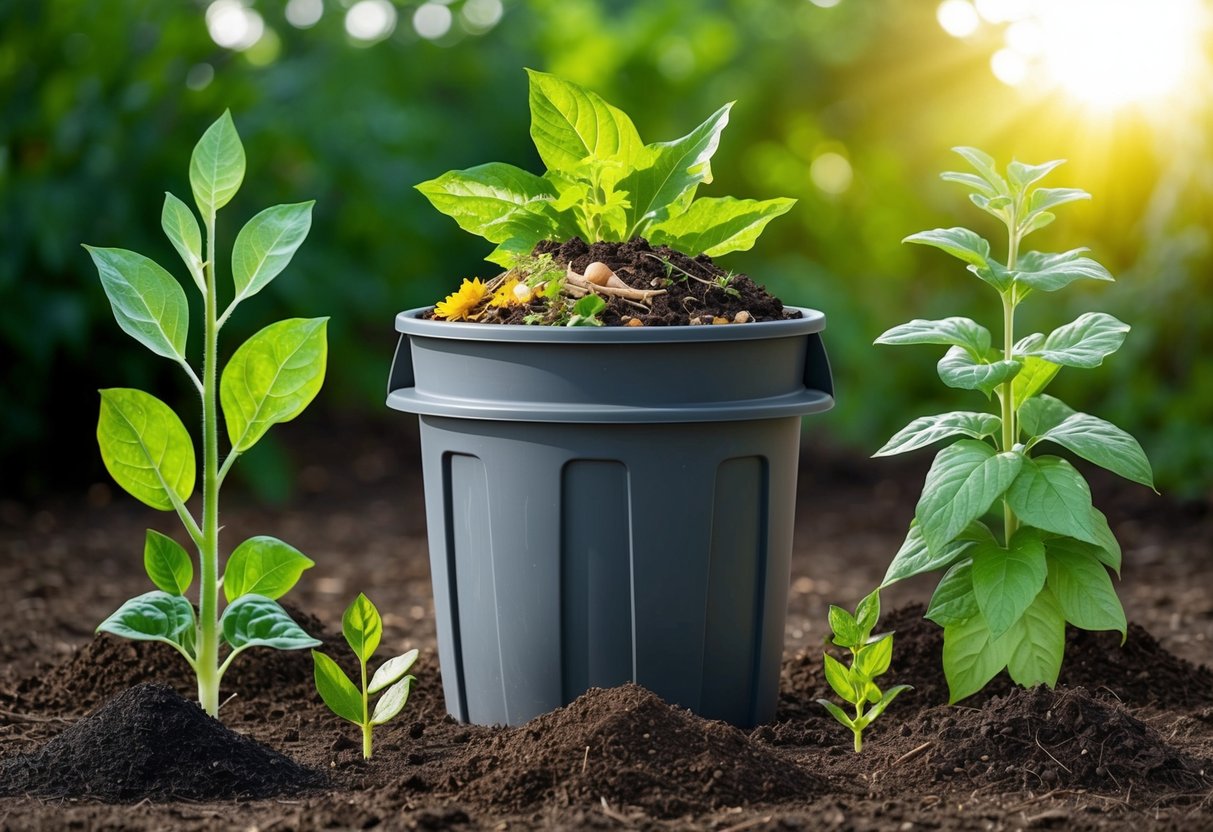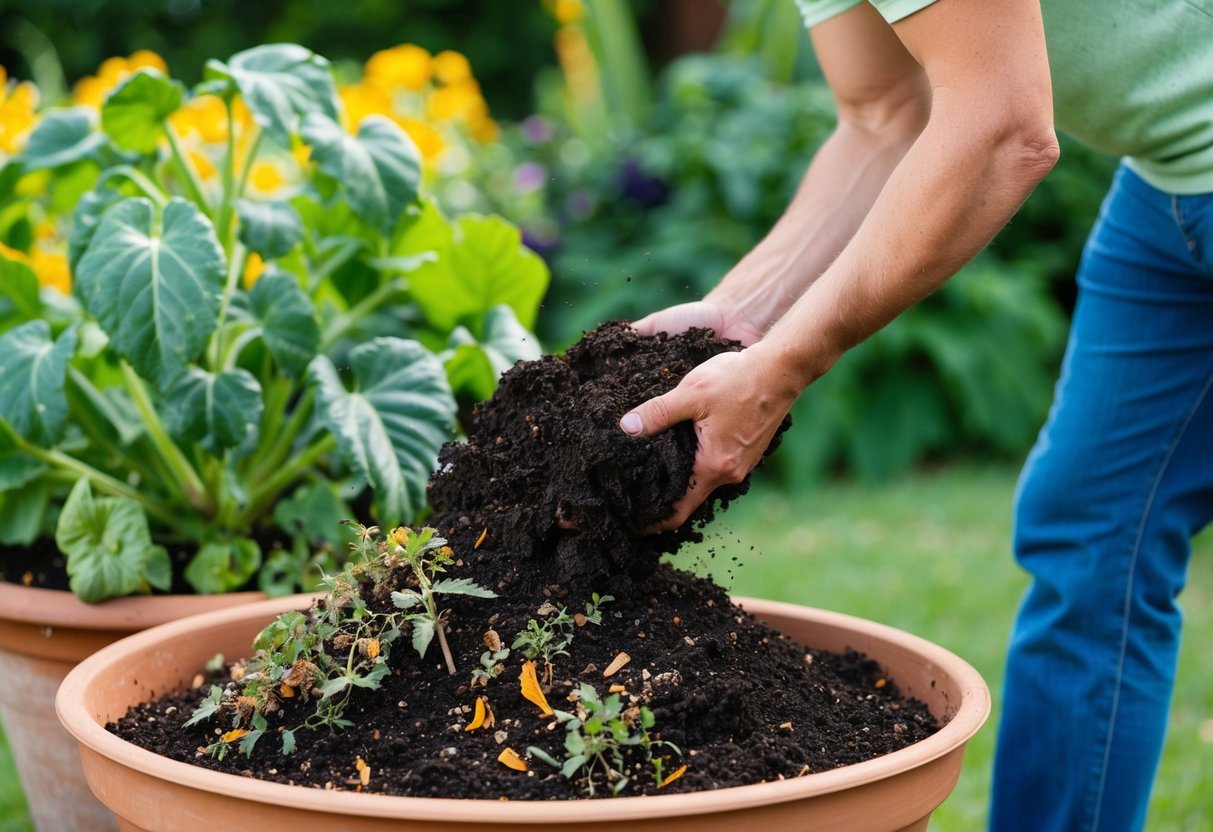Can I Reuse Old Soil from Dead Plants? Tips for Reviving and Refreshing
When a plant withers away, you might wonder if the soil is a lost cause too. The good news is, you can reuse soil from a dead plant with a few simple steps. This way, you can save money, reduce waste, and give your new plants a great start.

Reusing soil isn’t just about cutting costs; it’s about smart gardening, too. Before you start planting again, make sure to remove old roots and any debris. It’s also wise to sterilize the soil to get rid of pesky pathogens and pests. A bit of preparation can ensure the soil is ready for its next life.
Once your soil is clean and fresh, enhance it with added nutrients. You can mix it with fresh potting mix or add compost to boost its quality. Doing so creates a healthy environment for new plant growth, turning what might have seemed like a loss into an opportunity for new beginnings.
Understanding Soil Life Cycle

Soil is more than just dirt; it’s a living ecosystem. Inside it, you’ll find a mix of minerals, air, water, and organic matter. All these elements work together to support plants. Understanding how soil works can help you reuse it effectively.
Nutrients play a vital role in soil health. They feed the plants and keep them strong. Over time, dead plants can actually help add nutrients back into the soil. As they break down, they release valuable elements that new plants need to grow.
Organic matter is another key part of the soil life cycle. Decaying leaves, roots, and stems enrich the soil. They improve its texture and help it hold water and air. This makes the soil more fertile and ready for new plants.
When it comes to potting soil, the life cycle doesn’t change. Just like garden soil, it contains a mix of ingredients designed to support plant life. Reusing potting soil can be a great way to conserve resources.
To keep soil healthy, consider methods that enrich it. Adding compost can improve soil health by boosting nutrient content. Well-cared-for soil can support plant life for years to come, all while reducing waste.
Assessing Old Soil Quality

Before reusing soil from a dead plant, it’s crucial to evaluate its current state. This ensures a healthy environment for new plants. Check for signs of root rot or pests, and see if the soil lacks essential nutrients.
Identifying Root Rot and Pests
Root rot can often cause a plant’s demise. To identify this, sift through the soil and look for any dark, mushy roots. These need to be removed, as they can poison new plants. Also, keep an eye out for pests such as grubs or ants. Tip: Use a magnifying glass to spot smaller insects.
Signs of pest infestation include tiny holes in soil clumps or visible larvae. If you find them, consider treating the soil with natural remedies or gentle pesticides to eliminate these pests.
Checking for Nutrient Depletion
Healthy soil has a balance of nutrients. Over time, nutrients can be depleted, especially if the previous plant used a lot of them. To check, look for signs like the soil feeling hard or compacted, which might indicate a lack of organic matter.
You can also test the pH level with a simple test kit. Most plants prefer a neutral pH. If the pH is off, adjust it with lime to raise or sulfur to lower it. Adding compost or a mix of fresh potting soil can replenish necessary nutrients and improve the soil’s structure.
Reviving Old Soil

Reviving old soil involves enhancing its structure, nutrients, and drainage. It’s about making sure your soil is healthy and ready for new plants by incorporating valuable organic materials and nutrients. You can breathe new life into tired soil and support plant growth by following a few key steps.
Introducing Organic Compost
Adding organic compost to old soil can do wonders. Compost improves soil health by providing essential nutrients. It also promotes beneficial microbial activity. You might consider mixing compost with worm castings for an extra nutrient boost. These are rich in nitrogen and other key nutrients. Composting helps retain moisture, reducing the need for frequent watering. You’re essentially resetting your soil’s health.
Using materials like peat moss can also increase moisture retention and improve the texture of your soil. Compost is a natural and efficient way to refresh soil, making it a cornerstone of soil revival. By using compost, you actively recycle nutrients back into your garden.
Balancing Soil Nutrition
Balancing soil nutrients involves replenishing missing elements like nitrogen and phosphorus. Start with adding a mix of slow-release fertilizers. These gradually release nutrients over time. They keep the soil enriched longer and provide a consistent nutrient supply. Consider adding rock phosphate for its high phosphorus content.
Incorporating soil amendments such as lime can help correct any pH imbalances. A balanced pH ensures that plants can absorb nutrients effectively. By thoughtfully adding these components, you create a fertile environment that supports plant health. Keep an eye on soil tests if possible, to adjust nutrient levels as needed.
Enhancing Drainage Capability
Proper drainage is crucial for preventing waterlogging and root rot. To improve drainage, mix perlite or coarse sand into your soil. Perlite creates air pockets, helping excess water to escape. This is especially useful in pots where airflow is limited. You can also add sand or coarse material to break up heavy soils.
Think about using raised garden beds for better drainage and control. These options ensure that your soil drains adequately, helping prevent potential issues with roots. By improving drainage, you give plants a solid foundation to thrive.
Sterilization Techniques for Reuse

Cleaning and preparing soil for reuse is crucial to ensure it doesn’t harm new plants. Sterilization is a key step that eliminates harmful pathogens and pests from your soil.
Solarization Process
Solarization is a natural method that uses sunlight to sterilize soil.
To start, spread the soil in a sunny area of your garden. Make sure to flatten it out so the sun reaches every part. Then, cover the soil with clear plastic sheeting. This captures heat, increasing the soil temperature to levels that kill unwanted organisms. Leave it covered for about 4-6 weeks during the hottest part of the year.
Check the edges of your plastic sheeting to ensure they are securely fastened to the ground. You can use rocks or soil to keep it in place. After the solarization period, your soil should be free from harmful pathogens. This method also helps maintain moisture in the soil, making it ready for planting again.
Innovative Uses of Old Soil in Gardening

When you have old soil from dead plants, don’t throw it away. Instead, reuse it in creative ways to improve your gardening efforts. Old soil can be revitalized to create nutrient-rich environments or smartly layered in containers.
Creating Nutrient-Rich Raised Beds
Using old soil in raised beds can help you create a fertile growing space. Start by removing any leftover roots or debris from the soil. This helps prevent disease and pests.
Mix the old soil with fresh compost and organic material like peat or coir. These additions boost nutrients and improve soil structure, helping your plants grow better. Aerating the soil by turning it over and mixing it well will also improve drainage and root development.
Raised beds help control the soil quality better than traditional gardens. They can also keep weeds in check, making maintenance easier. Use the revitalized soil to plant vegetables, flowers, or herbs, ensuring they receive the right nutrients. This way, you’re not only recycling your old soil but also prioritizing its use for nurturing healthy plants.
Filling the Bottom of Large Containers
Large containers often need a lot of soil, which can be expensive and heavy. Using old soil at the bottom saves space and resources.
Begin by adding a layer of old soil to the bottom of your container. This acts as a filler, reducing the amount of fresh soil needed on top. For extra benefits, mix in some organic matter to boost nutrients and drainage.
Add fresh, high-quality potting soil on top. This top layer supports root growth and plant health. By layering your large containers this way, you optimize the soil use and recycle what you already have.
Reusing old soil in containers can be a practical solution for replanting. It helps maintain a sustainable gardening practice without compromising plant health.







